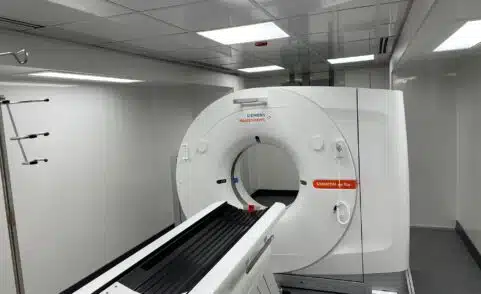
How Does Delaying Pregnancy Impact Breast Health?
If you’ve ever been told you were of “Advanced Medical Age” by an OB/GYN or you’ve been labeled as a “Geriatric Pregnancy,” you are part of a growing trend. More and more women over the age of 40 are having children. Between 2000 and 2012, the rate of first births to women over 40 increased by 35%. So at the same time you may be worried about things like gestational diabetes and getting enough folic acid, you also need to be thinking about your breast health. Despite what the geriatric labels may lead you to believe, you don’t need to apply for an AARP card, but you do need to start thinking about breast health.
Reproductive History and Breast Cancer Risk
Forty is the magic number when most women should start getting screening mammograms to check for breast cancer (women at higher risk for breast cancer may need to start screenings earlier). But with more and more women having children later in life – is screening for breast cancer while pregnant necessary? And is it safe?
Typically women who are 40 or over and pregnant are recommended to wait until their pregnancy is complete to have a screening mammogram, says Dr. Julie Sullivan, a RAYUS breast radiologist. If you or your doctor find a new breast lump or you have another breast problem while you’re pregnant, you have a few options. An ultrasound is typically ordered first to evaluate the breast lump and is safe to perform during pregnancy. If a mammogram is necessary, it can be performed with a lead vest over your abdomen to block the radiation exposure to your fetus. The amount of radiation used for a standard mammogram is very small, roughly equivalent to 7 weeks of background radiation (environmental radiation we all experience every day). Furthermore, the radiation is focused on the breast, so there is very minimal increased radiation exposure to the remainder of the body or the unborn child. Despite that, Dr. Sullivan says you’ll typically only get a mammogram while you’re pregnant if there is a reason to suspect cancer.
“For women without breast symptoms, screening mammography is typically delayed during pregnancy in order to avoid any unnecessary radiation to the unborn child, no matter how small,” says Dr. Julie Sullivan, RAYUS breast radiologist.
You can also get other types of imaging, such as ultrasound, to help diagnose the lump. A breast biopsy can even be performed with little risk to the pregnancy. In most cases, lumps come back benign; however, if cancer is detected during pregnancy, there are options for treatment either during or after your pregnancy.
Some women do develop breast cancer during pregnancy, though it’s rare, says Dr. Paula George, a RAYUS breast radiologist.
“We’ve seen several pregnant patients with new breast masses this year. The good news is that the majority of these were benign. We have had a few patients who have been pregnant and developed breast cancer. Most breast lumps come and go. If anything persists for more than a week or two, tell your doctor or health care provider and have it evaluated,” she says.
During your pregnancy, make sure you do monthly self-breast exams. Your OB/GYN will likely do a clinical breast exam at your check-ups as well, especially if you are considered high risk for breast cancer. Keep in mind, breasts change dramatically during pregnancy. They can become lumpy and bumpy and can change overnight. If you detect any lump that persists, have it examined by your doctor or health care provider.
Reproductive History and Breast Cancer Risk
Your risk of developing breast cancer can be impacted by your age during your first pregnancy, the number of times you are pregnant, and if you breastfeed and for how long. But Dr. George notes the relationship of these factors and breast cancer is complex.
Number of Pregnancies: A woman who has had at least one birth, lowers her risk of developing breast cancer in the long-term when compared to a woman who has not given birth. The risk declines even further with the increasing number of children you have. However, this risk reduction may be limited to hormone receptor-positive breast cancer and not hormone receptor-negative breast cancer, according to the National Cancer Institute.
Age when Pregnant: A woman who has her first child at age 35 or younger is statistically at a lower risk of developing breast cancer when compared to a woman who has had no children or a woman who has had one child when she was over age 35. According to the Susan G. Komen Foundation, the different effects of your age at first childbirth on breast cancer risk may be related to breast cells. “During pregnancy, breast cells grow rapidly. If there is any genetic damage in the breast cells, it gets copied as the cells grow. This increased genetic damage in the cells can lead to breast cancer. And, the chance of having such genetic damage goes up with age.”
Breastfeeding: Research suggests that breastfeeding for a year (total lifetime) slightly lowers a woman’s risk of developing breast cancer. If a woman breastfeeds for a total of 2 years over her lifetime, she gains twice the benefit in breast cancer reduction
Though some of the factors seem to play a role in the likelihood that you will develop breast cancer, Dr. George cautions that the impact does not decrease your risk of developing breast cancer while you are pregnant. In fact, if you detect breast cancer while you are pregnant, the hormones from your pregnancy can actually cause a mass to grow more quickly.
High Risk and Pregnant
If you are at high risk for breast cancer, it is recommended that you have a yearly mammogram, alternated at 6 month intervals with a yearly breast MRI (or a breast ultrasound if you are not a candidate for a breast MRI). Women who fall into the “high risk” category and become pregnant can continue with the breast ultrasound exams, monthly self-breast exams, and regular clinical exams, but hold off on the screening mammogram and MRI until after you deliver your baby. An ultrasound can detect small masses, as well as evaluate any areas of concern.
If you are breast feeding, it is best to wait until you are finished before you have your mammogram and / or breast MRI. However, if you plan to breast feed for more than several months and don’t want to wait until you are finished breast feeding to have your mammogram, you can have your mammogram right after nursing or pumping, when the breasts are less engorged. It is not recommended to have a screening breast MRI while you are nursing.
Pregnancy – at any age – can be distracting, but it’s important not to forget about breast health for those nine life-changing months of your life. The most important thing for you to do is to get regular exams and check yourself, says Dr. Sullivan. “Earlier cancer detection results in more treatment options and improved survival outcomes, so knowing your body and being proactive could save your life!”
